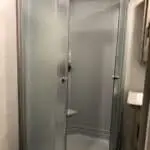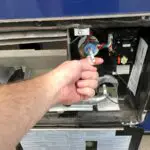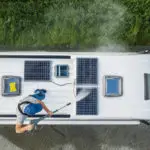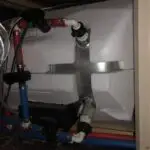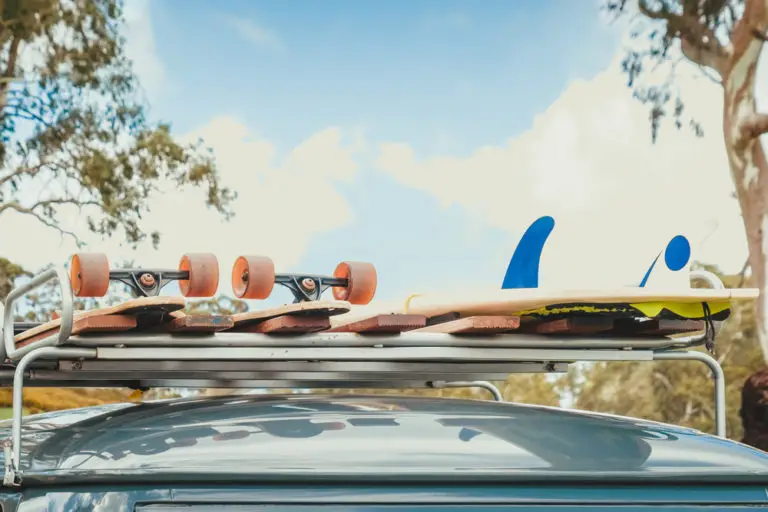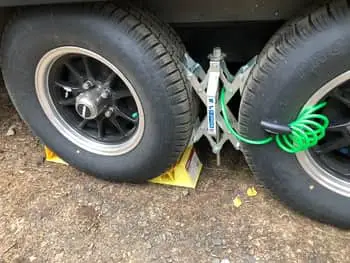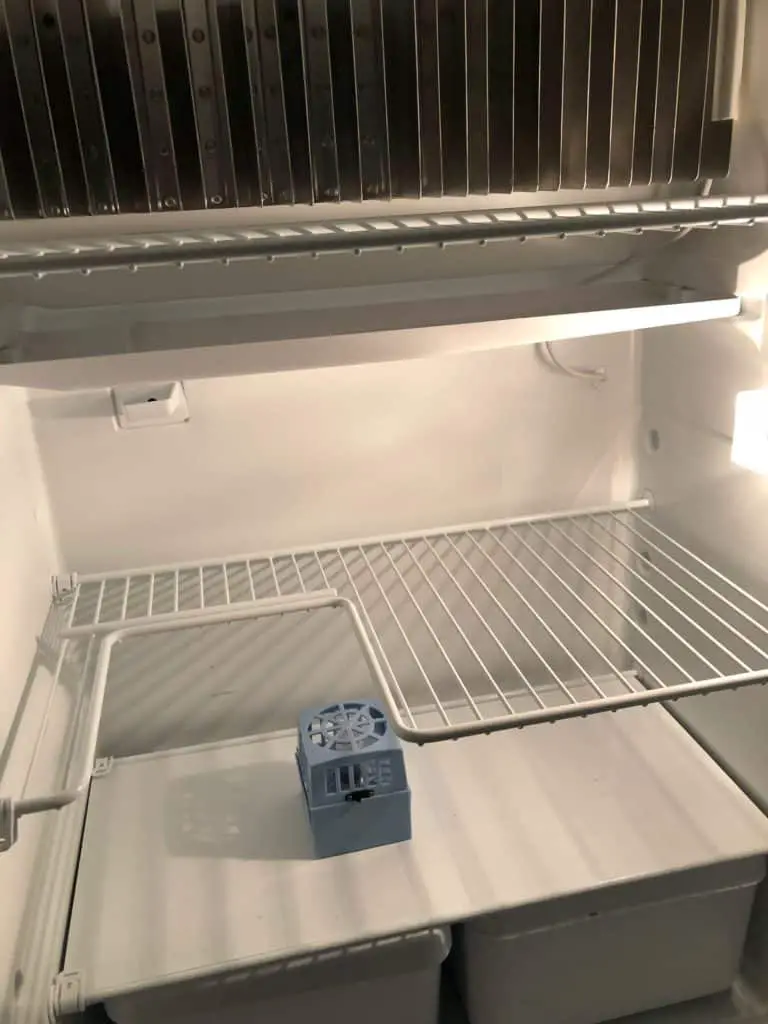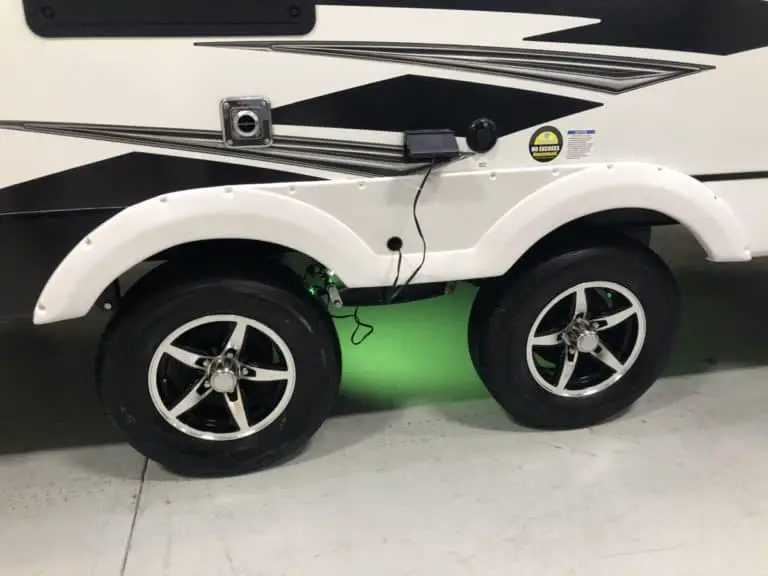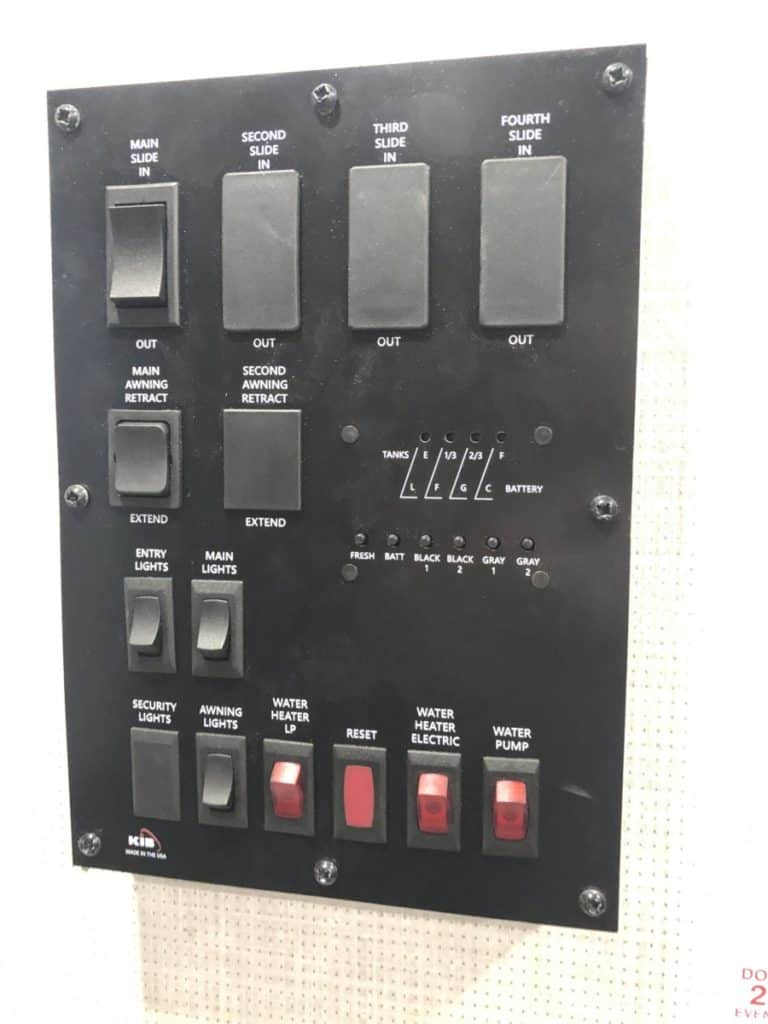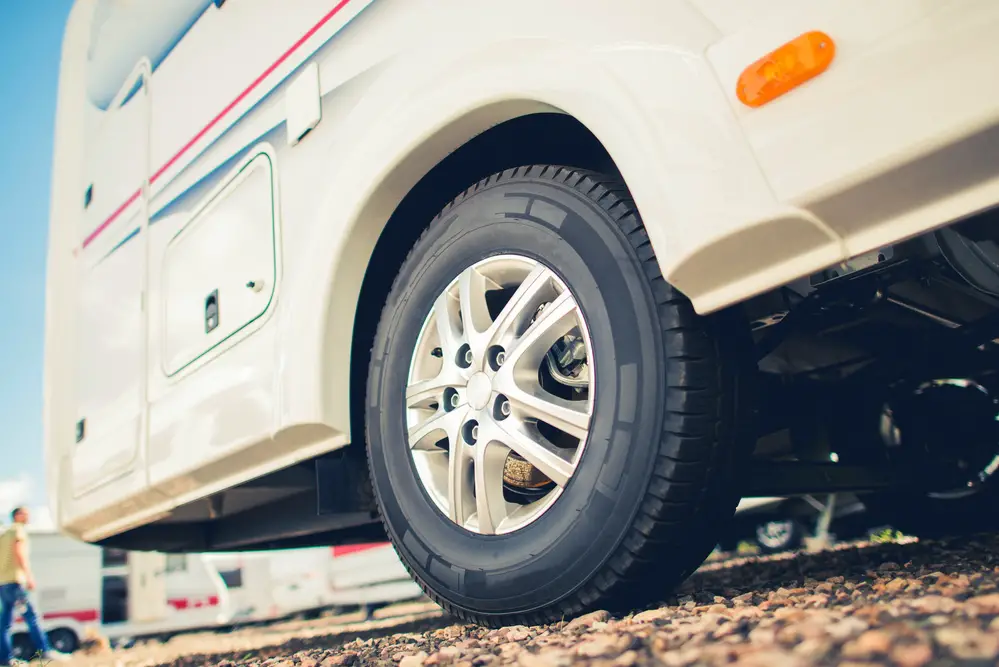How To Increase the Water Pressure in Your RV Shower: A Practical Guide
Taking a shower in your RV can be a bit frustrating when you’re dealing with low water pressure. Increasing the water pressure in your RV shower might make the entire experience more enjoyable and efficient. In this article, we’ll discuss some practical ways you can improve the water pressure for a satisfying shower while out on the road in your recreational vehicle.
To increase the water pressure in your RV shower, you first need to get a pressure regulator. If the water pressure is consistently low, you should replace the shower head. If this doesn’t help, you need to check for cracks and leaks in the pipes and check the filter for blockages.
The rest of this article will give you a step-by-step guide on how to monitor water pressure and how to regulate it to get the perfect water pressure for your RV shower.
5 Ways to Increase the Water Pressure in Your RV Shower

The standard water pressure for an RV shower is 40 to 50 pounds per square inch (PSI) and shouldn’t exceed 60 PSI for the safety of the RV’s plumbing lines and fittings. If the water pressure is too low, here’s how to increase it.
5 ways to increase the Water Pressure in your RV are:
- Get an adjustable water pressure regulator
- Replace a kinked water hose
- Replace your shower head
- Check pipes and valves for blockages and cracks
- Replace your RV water filter
Now that you have the Hitlist, lets get into detail on how to troubleshoot and fix each problem below.
1. Get an Adjustable Water Pressure Regulator
Maintaining decent water pressure in an RV shower is a crucial step in a good RV experience. Too high, and the whole system could become damaged. Too low, and no shower will really give you that freshly-scrubbed feeling.
Not to mention, low water pressure is usually an indicator of a larger and more serious problem taking place in the RV’s internal water system. Luckily, there are procedures and solutions for all potential issues — the first of which includes getting a water pressure regulator.
A water pressure regulator is a vital asset for every RV owner. It doesn’t control the flow of water, but it does do the following:
- Monitors the water pressure
- Keeps the water pressure consistent
- Allows you to adjust the PSI (only on some)
Without a water pressure regulator in an RV, there’s a much greater chance of springing a leak and causing breakages in the RV’s water system. The damage could be quite severe and result in costly repairs.
If you have a standard cheap water pressure regulator and your water pressure is too low, you may need to invest in an adjustable model. When we started we had a cheap inline water pressure regulator (like this one) which reduces to 40-50 psi. In order to do that, you need to start with a high pressure to begin with. If you start with 40psi it will reduce it more and provide you with little water pressure at your shower or faucets.
Anytime we have our water filter in combination with our cheap water pressure regulator we were finding that our water pressure was too low every time. We found an easy solution: an adjustable water pressure regulator. This allows us to use our water filter at the hose connection and the adjustable water filter after to ensure that we have enough pressure at the RV for a great shower!
2. Replace Kinked RV Water Hose
RV water hoses are cheap, so it may benefit you to replace it with a water hose that won’t kink. I can tell you that in our RV our hose was kinked and impacting our shower water pressure.
A stainless steel water hose like this model won’t kink and give you optimal water pressure for your RV.
3. Replace the RV Shower Head
Replacing the RV shower head is perhaps the easiest and cheapest method of fixing low water pressure.
Naturally, a shower head has no bearing on the actual pressure of the water in the pipes, but it does control the flow of water from the pipes into the shower. Therefore, depending on the type of shower head you use will determine how much water you use during your shower.
Shower heads are engineered for various flow types:
- Rain or waterfall: These shower head types provide a gentle, natural shower experience while still providing full coverage to the user. Depending on the exact shower head, this can increase water usage.
- High-pressure: High-pressure shower heads create a harder flow of water for a massage effect, which is quite therapeutic. But be warned — this uses more water than other attachments.
- Water-saving: These attachments purposefully restrict the flow of water to converse as much as possible, so this isn’t a good option for an RV owner with low water pressure problems.
When picking a new RV shower head there are only two options we would recommend. Make sure NOT TO CHEAP OUT on a shower head as they can leak, provide bad pressure, or are just bad. The show heads we recommend are very economical anyways and will change your mind about how great a shower in a RV can be:
Oxygenics Shower Heads
One popular accessory for increasing water pressure in your RV shower is an Oxygenics shower head. These shower heads are designed to boost water pressure by injecting air into the water flow, creating a high-pressure mist-like sensation. Some benefits of Oxygenics shower heads include:
- Efficient use of water: They can save water by reducing the flow rate without sacrificing pressure.
- Easy installation: Most Oxygenics shower heads are compatible with standard RV shower connections.
- Variety of settings: Many models come with adjustable spray settings to suit your preference.
- Oxygenics Body Spa RV Handheld Shower Head: This is the model we have and we LOVE it. It mixes oxygen into the water spray to amplify the existing water pressure and has a 60″ hose. The Body Spa has an on/off setting to conserve water and is truly a great showerhead.
- Oxygenics Fury RV Handheld Shower Head: If you are looking for an upgraded shower head, this one is for you. It has 5 spray settings, has a rubber grip handle, flow control lever, and a 72″ hose.
4. Check the Pipes for Cracks and Leaks
Cracks and leaks are a major contributor to low water pressure, often without you even realizing it’s happening. To check for leaks, start by checking the seals and other vulnerable areas that may have deteriorated over time. This includes particular areas and appliances which are prone to leakage, like toilet valves.
Inner fittings and connections between various pipes can wear away or loosen, so finding these leaks early can save a lot of time and money later, although these items will need to be replaced regardless.
Plumbing repairs in an RV can be fairly cheap, but if severe, they can cost upwards of $200. Thankfully, it’s an extremely common repair in an RV, and most hardware stores will stock kits well-equipped to get your water system up and running again.
For a practical demonstration of how to replace leaky valves in an RV plumbing system, watch the below video by Outliers Overland:
5. Check the RV Water Filter for Blockages
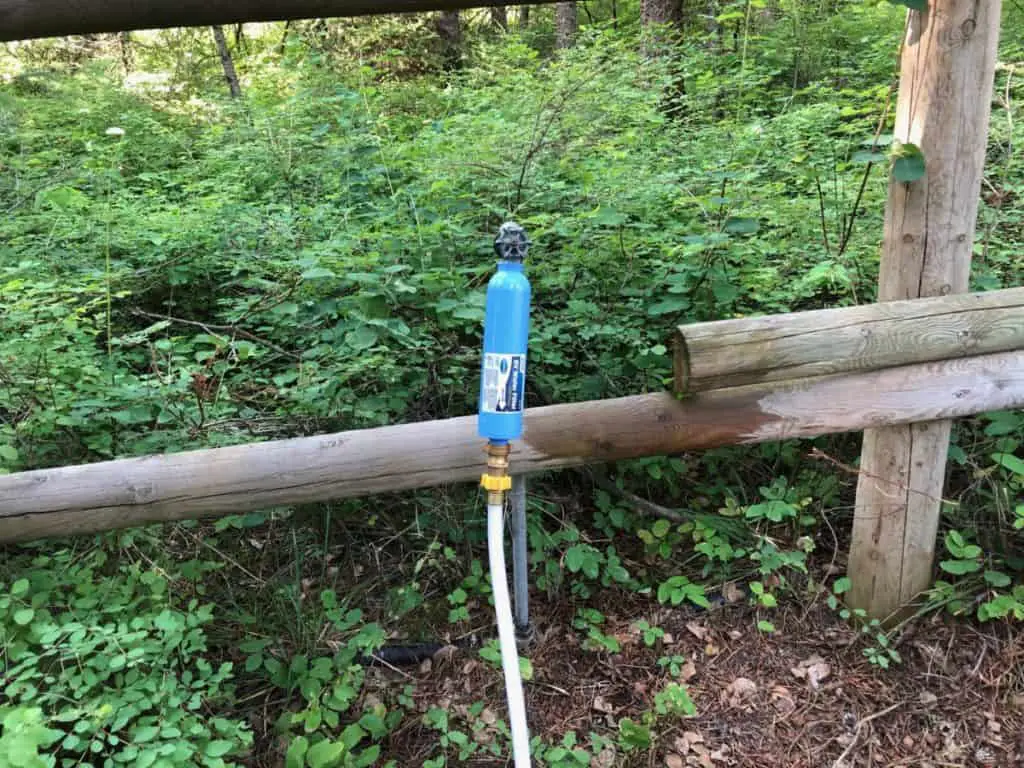
Water gathered for use in an RV plumbing system often needs to be filtered. For example, some campground well water can be full of sediments that can clog the pipes and supply unclean water to your RV, unfit for drinking and showering without a filter.
Water filters, like water pressure regulators, are an invaluable resource for the RV owner. When a water filter gets clogged due to a buildup of sediment and other debris, it lowers the water pressure. Even if there is no buildup of sediment in the water filter, your pressure will be reduced by water having to flow through it.
So, what can you do about a clogged water filter?
- Check your filter regularly: Routine checks to see if your water pressure regulator needs turned up will tell you if it is dirty if using the same water supply
- Replace the filter: As a general rule, you should replace the water filter every six months or if your RV has been sitting dormant and unused for a while.
- Keep a spare filter on hand: Storing a spare filter for a rainy day is an excellent solution in a hitch. You can replace a clogged filter anytime, anywhere, without needing to run to a hardware store.
I recommend getting the this inline water filter (available on Amazon.com). They remove all impurities from water, reduce sediment, chlorine, odor, and bad taste allowing you a hygienic and pleasant shower experience.
If you have an untrusted water source and need protection against viruses, bacteria, and cysts, this model is what you need.
If you take away one thing from this article it is: NEVER buy a cheap water filter, you don’t know what some off brands can be using in their manufacturing process, so make sure to buy a good trusted brand.
If you can’t quite tell how the absence of a filter affects your water quality, consider these points:
- Impure water appears green due to bacterial growth.
- This bacteria and other gunk can lead to not only blockages in filters but also in pipes and shower heads.
- The greater the buildup and the more severe the clogging, the more devastating the damage.
Understanding Water Pressure in RVs
When using an RV, it’s important to understand what affects the water pressure in your RV shower. The main components involved in the water pressure in your RV are the water pressure regulator, the RV water pump, and the RV water system. This section will briefly explain each component and give you an idea of how they work together to ensure consistent water pressure in your shower.
Water Pressure Regulator
The water pressure regulator is a critical component in managing the water pressure in your RV. Its function is to prevent excessive water pressure from entering your RV and potentially damaging your pipes and appliances. When you connect your RV to a city water supply, water pressure can range from 50 psi to even over 100 psi, while the recommended water pressure for an RV is between 40-60 psi.
To maintain a safe and consistent water pressure, you should install a regulator at the water hose inlet. There are two types of regulators: adjustable and fixed. Adjustable regulators allow you to set the desired pressure level, while fixed regulators automatically maintain a preset pressure level. Make sure to check your water pressure regularly to ensure the regulator is functioning properly.
RV Water Pump
The RV water pump is responsible for providing water pressure when you’re not connected to a city water supply. It draws water from your fresh water tank and supplies it to your RV’s plumbing system. The performance of the pump affects water pressure in your RV shower.
A standard 12-volt RV water pump operates on your RV’s battery and has a pressure switch that turns the pump on when a faucet is opened. The pump can provide water pressure between 30-50 psi. If you’re experiencing low water pressure, it could be due to the age of the pump, a malfunctioning pressure switch, or other factors that may affect the pump’s performance. By maintaining your water pump and replacing it when needed, you can ensure proper water pressure in your RV shower.
RV Water System
Your RV’s water system is composed of various components, such as pipes, valves, fittings, and connections, which all play a role in delivering water to your shower. The water pressure in your RV shower can be affected by these components when there is a problem, such as debris clogging the pipes, leaks, or damages to the system.
To maintain water pressure, periodically inspect your RV’s water system for any visible issues, such as leaks, damaged pipes, or loose connections. You should also clean your RV’s water heater tank and flush out any sediments that might settle at the bottom, which can clog the plumbing system and affect water pressure.
By understanding the role of the water pressure regulator, RV water pump, and the RV water system, you can ensure consistent water pressure in your RV shower and enjoy a more comfortable experience.
Tips for Maintaining Optimal Water Pressure in Your RV
Regularly Inspect RV Water Lines
To maintain optimal water pressure in your RV shower, it’s essential to regularly inspect your water lines. Make sure there are no leaks, kinks, or damage causing pressure loss. You can prevent potential issues by scheduling routine check-ups for your water lines, so you can enjoy a consistent water pressure in your shower.
Water lines get vibrated around every time you tow, so it is always good to check. Also check for puddles under your RV after you camp, some of the waterlines are under the floor in the underbelly, so you may not notice leaks within your RV.
Monitor Water Pressure Gauge
Another helpful tip is to monitor your water pressure gauge frequently. This allows you to detect any sudden drops or fluctuations in pressure, which could indicate a problem with the source water. If you notice any changes, take action promptly to address the issue and restore your shower’s water pressure to its optimal level.
Prevent Sediment Buildup
Sediment buildup in your RV’s water system can negatively affect water pressure. To prevent this issue, make sure to regularly change your water filters if you’re frequently using hard water. Taking these steps to address and prevent sediment buildup will ensure your RV shower maintains its desired water pressure.
Frequently Asked Questions
How do I improve the water flow in my RV shower?
To improve water flow in your RV shower, start by checking if there are any clogs or mineral deposits in the showerhead or hose. Clean or replace them as needed. You can also consider upgrading your showerhead to a high-pressure model, adjusting the water pressure regulator, or installing a pressure booster pump.
What solutions are available for enhancing RV shower pressure?
There are multiple solutions for enhancing RV shower pressure, such as installing a high-pressure showerhead, using an accumulator tank, adjusting the water pressure regulator, and adding a pressure booster pump. Evaluate your RV’s specific needs to select the most appropriate solution.
How can I fix weak water pressure in my RV bathroom?
To fix weak water pressure in your RV bathroom, first inspect and clean or replace any clogged or damaged components, such as showerheads, hoses, and filters. Then, you might consider adjusting the water pressure regulator, upgrading the showerhead, or adding a pressure booster pump to enhance water pressure further.
What factors could lead to low water pressure in an RV shower?
Low water pressure in an RV shower can result from various factors, including clogged showerheads or hoses, insufficient water pressure from the source, malfunctioning water pressure regulators, or damaged water pumps. Identifying the specific cause will help you determine the best solution for increasing water pressure.
How do pressure booster pumps work for RV showers?
Pressure booster pumps work by increasing the water flow in your RV plumbing system. They’re installed between the incoming water line and the water heater to boost the pressure throughout the entire RV—including the shower. Ensure you choose a compatible model for your specific RV.
Do I need a water pressure regulator for my RV shower?
Yes, a water pressure regulator is essential for your RV shower, as it helps protect the RV plumbing system from excessive pressure that may cause damages. It’s usually installed on the water inlet and can be adjusted to the desired pressure level. Regularly inspect and maintain the regulator to ensure optimal performance.
Final Thoughts
The cause of low water pressure is almost always a simple one with a straightforward solution. Sometimes the method is cheap and easy, like installing a new showerhead. Other times it’s a little more complicated, like replacing faulty valves.
Whatever the issue, hopefully, this article has talked you through the various possible problems and how to fix them sufficiently to give you back your ideal shower experience.
Be the first to be notified about FREE tips, hints, coupon codes, and email-exclusive information. All for FREE!

